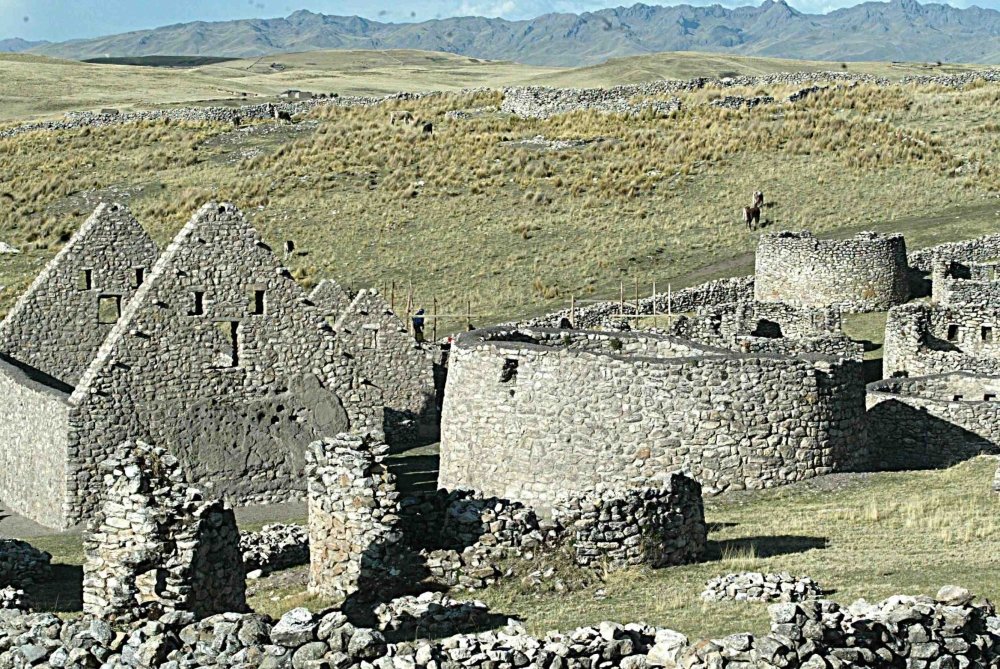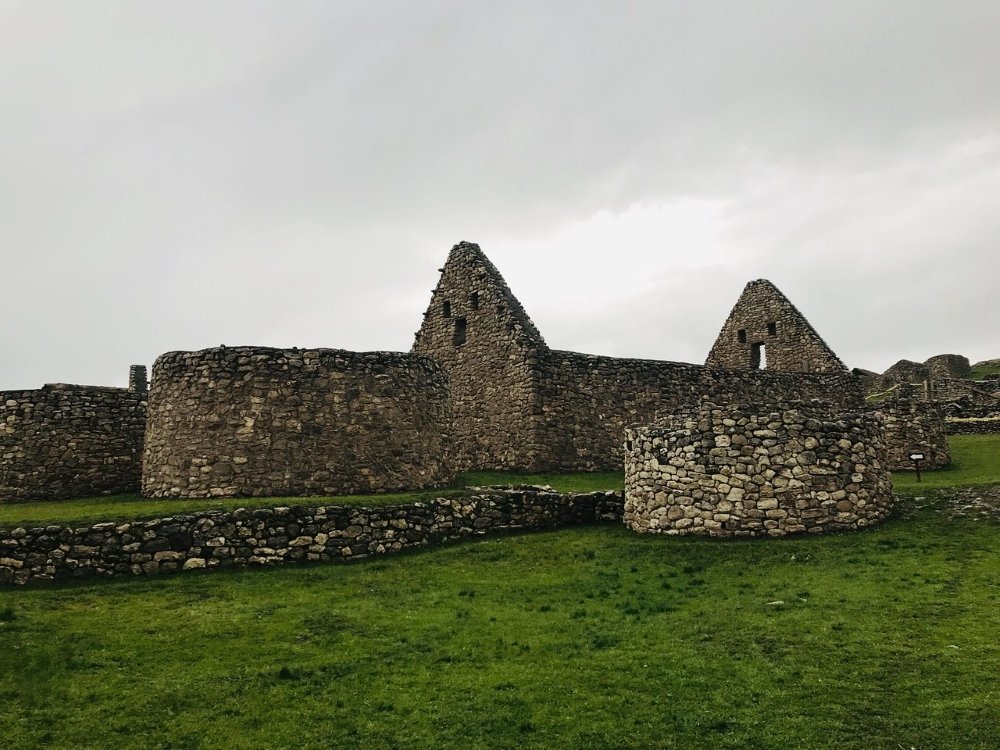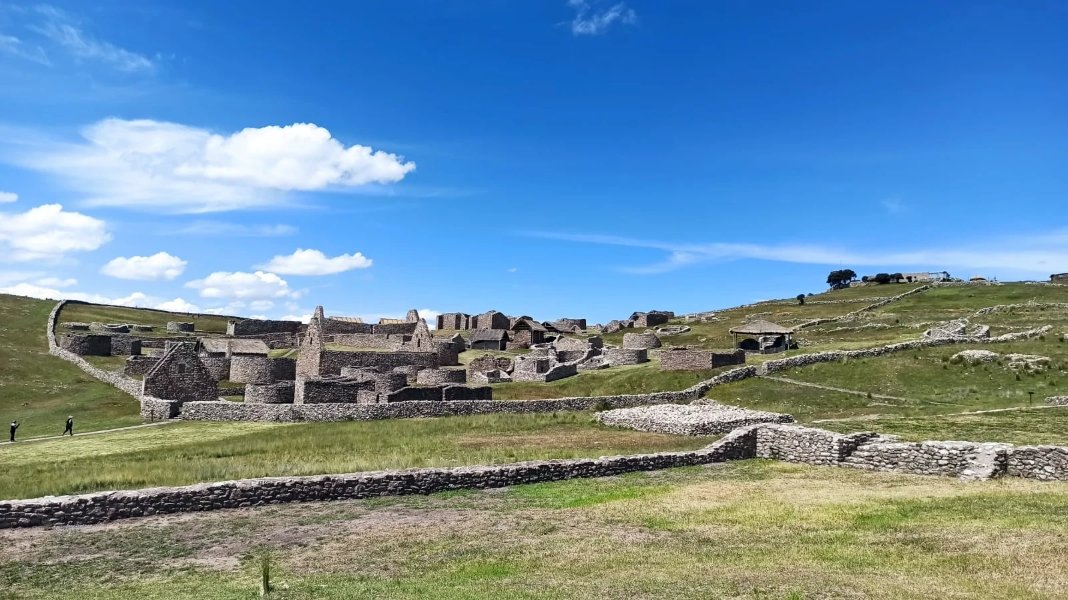Archaeological Complex of Kanamarca | Cusco
“Kanamarca” is a Quechua word, the language of the Incas and still spoken by many people in Peru and parts of the Andes. The translation of “Kanamarca” into Spanish can vary depending on the context and the specific Quechua dialect. In general, “Kanamarca” can be interpreted as “salt village”, where “kana” means “salt” and “marca” can be translated as “village” or “place”.
It is an archaeological site located in a pit at an altitude of 3950 meters above sea level and covers approximately one hectare of extension. The buildings are mainly built with stone and mud, and the enclosures have circular and rectangular shapes.
History of the Archaeological Complex of Kanamarca
- Pre – Inca
The history of Kanamarca dates back to pre-Inca times, when the region was inhabited by the Yauri people, considered the oldest in the area. They settled in places like Chisipata, Trapichepampa and Yuthu around 5000 BC, living in caves and rocky areas. The ancient K’ana nation, composed of several human settlements, would have spread from this region.
The capital of this nation would have been located in Hatun K’ana, in the current district of Pichigua. During the pre-Inca period, the K’ana were highly influenced by the Wari and Tiahuanaku cultures. After the decline of the Wari culture, the K’ana occupied the territory and established their administrative capital in Kanamarca and their ceremonial center in Ancocagua.
-
During the Inca period
It joined the Tawantinsuyo as a result of a confederation with the Incas. The integration took place after a message from the Inca at Lurucahi, where the K’ana chiefs were ordered to respect Inca customs and traditions. The respectful Canas attended the ceremony as special guests and decided to place themselves at the service of the Inca.
- During the colonial period
After the Spanish conquest, a new type of organization was introduced in the Tahuantinsuyo. The curates of Pichigua, Yauri, Coporaque and Ankonkagua belonged to the corregimiento of Canas de Orcosuyo, the most important being the curates of Pichigua and Yauri. The aborigines were subjected to forced labor and tribute, which led some to migrate to different places and others to be exploited in the mines.

What to see in Kanamarca?
Since Kanamarca is an archaeological site located in the Espinar region of southern Peru, what you will see there are mainly ruins and ancient structures. However, here are some of the features you might find in Kanamarca:
- Ancient structures: Kanamarca is home to ancient ruins and structures dating back to pre-Inca and Inca times. You will see stone walls, agricultural terraces, ceremonial enclosures and possibly other architectural elements that provide insight into the life and culture of the civilizations that inhabited the area.
- Natural scenery: In addition to the archaeological structures, the natural environment surrounding Kanamarca can be breathtaking. You can enjoy panoramic views of the surrounding mountains and valleys, as well as the local flora and fauna.
- Cave paintings: Since the Espinar region has an ancient history of human occupation, you may find cave paintings in the caves and rock formations near Kanamarca. These paintings can offer a fascinating insight into the life and beliefs of the ancient inhabitants of the area.
- Hiking and trekking: If you enjoy the outdoors and adventure, you could take the opportunity to hike and trek around Kanamarca. Exploring the area on foot will allow you to better appreciate its natural beauty and discover hidden corners that you might otherwise overlook.
In short, in Kanamarca you will find mainly archaeological ruins and a stunning natural environment. It is an ideal place for history and adventure lovers who wish to immerse themselves in the region’s ancient past while enjoying the beauty of nature.

How to get to Kanamarca?
Since Kanamarca is an archaeological site located in the Espinar region in southern Peru, access can be a bit complicated due to its remote location. Here are some options to get to Kanamarca:
- Private Transportation: The most convenient way to get to Kanamarca may be by private transportation, such as renting a car or hiring a cab service. From the nearest town, which could be Espinar, you should be able to find private transport services to take you to Kanamarca. Be sure to ask the locals about road conditions and the best route to get to the archaeological site.
- Public Transportation and Hiking: You can also reach the area by public transportation, such as bus, to the nearest town and then hike to Kanamarca. This may require more time and effort, but can be a more economical option. Be sure to get information on bus routes and walking distance from the nearest town to the archaeological site.
- Guided Tours: Another option is to join a guided tour that includes Kanamarca in its itinerary. Many travel agencies in the region offer tours to lesser known archaeological sites such as Kanamarca. This can be convenient as it includes transportation, guide and often local knowledge about the area.
Regardless of the method you choose, it is important to research and plan ahead, especially if Kanamarca is a lesser known and remote destination. Make sure you have enough water, food and adequate hiking gear if you decide to reach the site on foot.
Recommendations to visit Kanamarca Archaeological Complex
If you are planning to visit Kanamarca, here are some recommendations that can help you have a satisfactory experience:

- Research and plan ahead
Before your visit, do some research on Kanamarca to have a basic understanding of its history, location and any special requirements to access the site. Plan your travel route and make sure you have all the necessary information on how to get there and what to expect at the site.
- Dress appropriately
Kanamarca is in a mountainous region, so the weather can be variable and often cool, especially at high altitudes. Wear comfortable clothing suitable for walking, as well as extra layers for warmth if necessary. Sturdy footwear suitable for walking is also essential.
- Bring water and food
Be sure to bring enough drinking water and some snacks or energy foods to keep your energy up during the visit. You may not find stores or services near the archaeological site, so it is best to be prepared.
-
Respect the site and the environment
When visiting Kanamarca, be sure to respect the archaeological site and its natural surroundings. Do not touch or damage ancient structures, do not leave trash and follow any rules or directions provided by local authorities or guides.
- Be aware of the altitude
Kanamarca is at a considerable altitude, so it is important to be aware of the possible effects of altitude sickness. Take the necessary precautions, such as acclimatizing gradually, drinking enough water and resting if you experience symptoms of altitude sickness.
- Consider hiring a guide
If possible, consider hiring a local guide who can provide additional information about the archaeological site and its history. A guide can enrich your experience by providing details and context that you might otherwise overlook.
By following these recommendations, you can enjoy a safe and enriching visit to Kanamarca and appreciate the richness of its archaeological and natural heritage.












